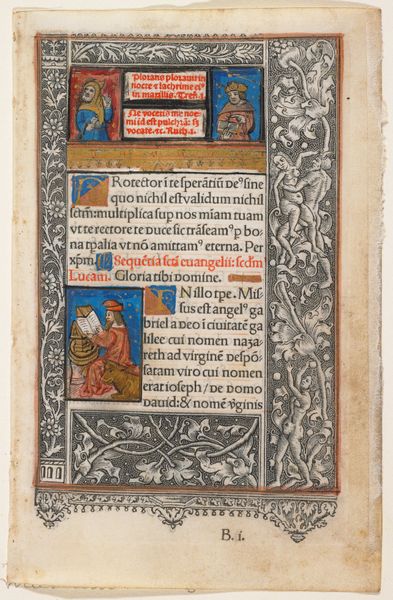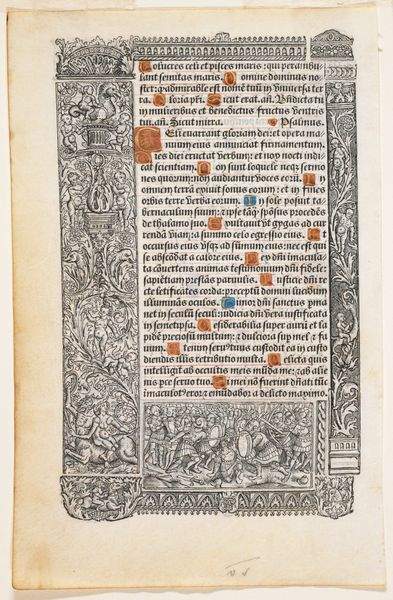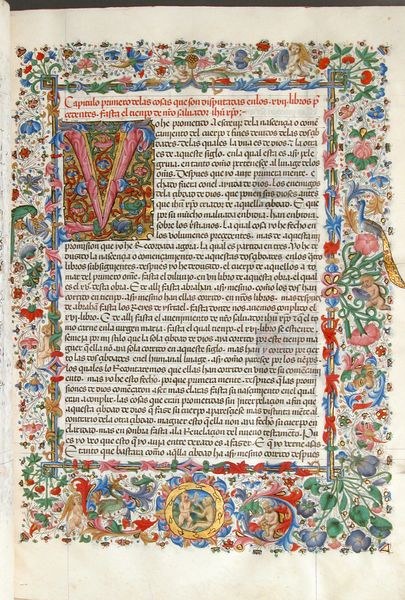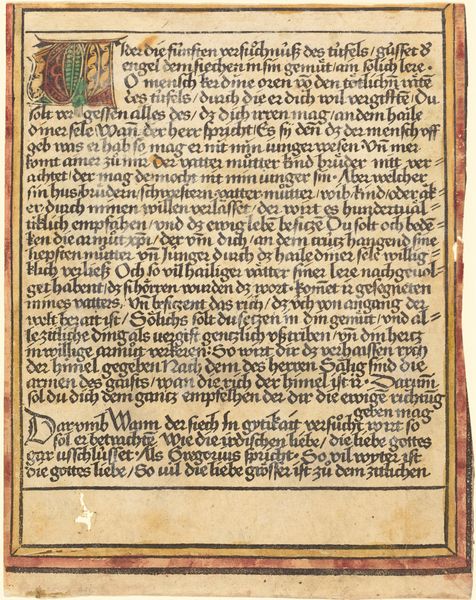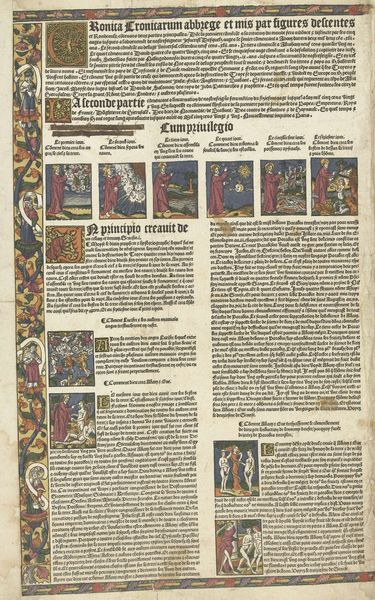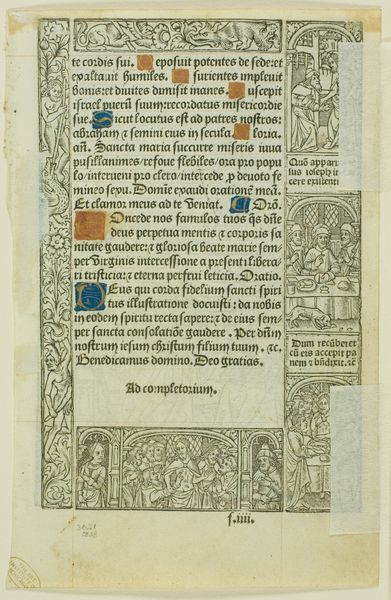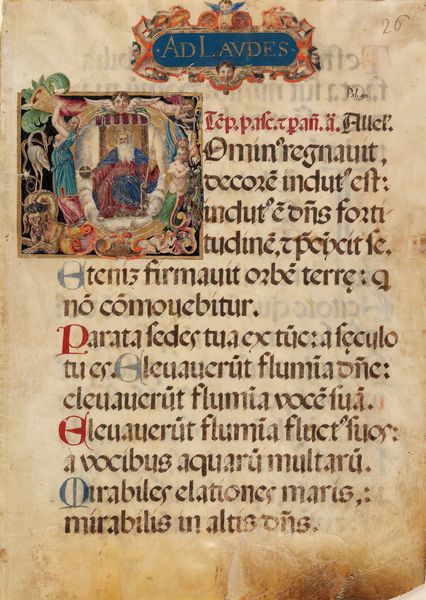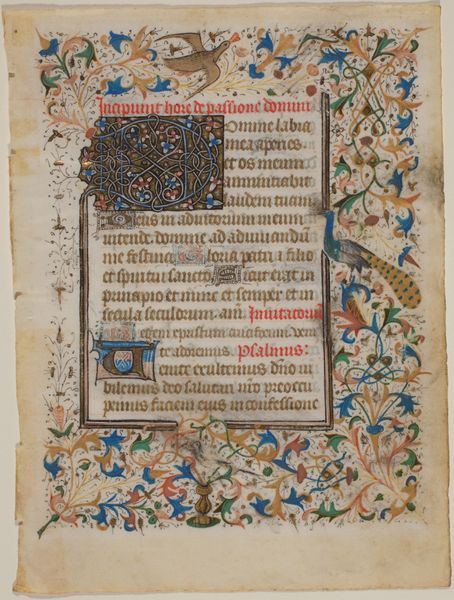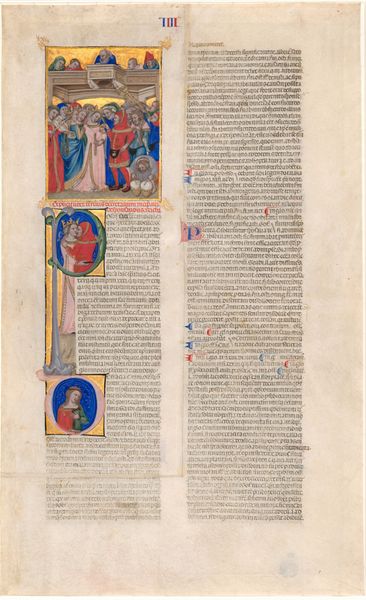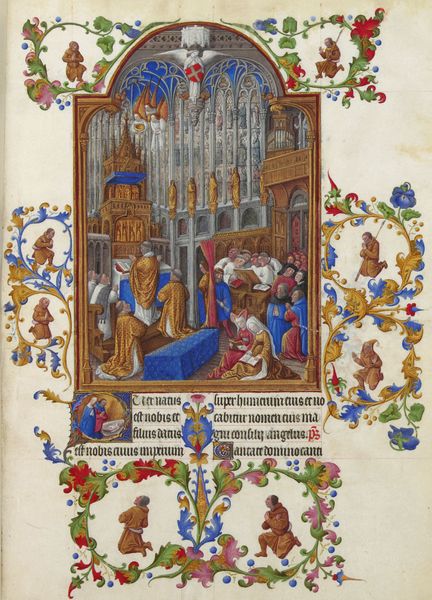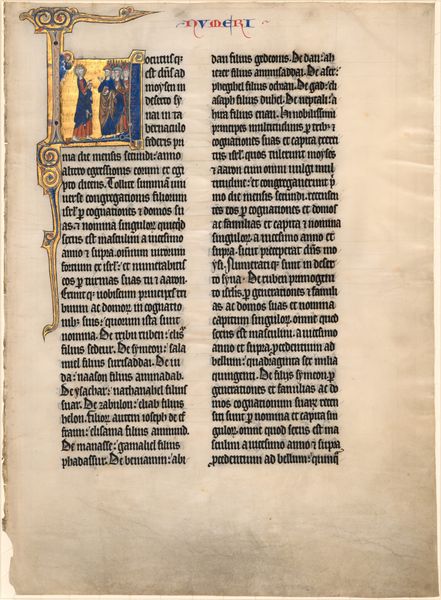
Spanish Translation of Saint Augustine's "City of God" 1446 - 1482
0:00
0:00
watercolor, ink
#
medieval
#
water colours
#
figuration
#
watercolor
#
ink
#
coloured pencil
#
medieval-art
#
mixed media
Dimensions: 15 1/2 x 11 3/8 x 3 1/21 in. (39.4 x 28.9 x 8.9 cm)
Copyright: Public Domain
Curator: This is a fascinating page from a Spanish translation of Saint Augustine’s "City of God." Dating roughly from 1446 to 1482, this exquisite example of medieval illumination now resides at the Metropolitan Museum of Art. Editor: The first thing that strikes me is how meticulously it's rendered. There’s something almost jewel-like about the layering of inks and watercolors, though, looking closer, I notice the page is buckling. Curator: The materials certainly tell a story. Consider the value of pigments and parchment during the medieval period— the commitment of resources reveals the high status this work commanded. Note the prevalence of gold leaf. Editor: And the way it's been worked—or overworked! The density of decoration pushes against the functionality of the text itself. Look at that border— the colored pencil detail in the botanical pattern almost completely obscures the main text. It really pushes back against modern ideas about utility. Curator: Yet this perceived “overwork” is fundamental. The density amplifies the book’s spiritual and intellectual value. Consider the visual program: Angels flank what appears to be a shield bearing an elaborate city; This references Augustine's concept of the "City of God." This symbolism would provide spiritual sustenance for those able to read it. Editor: While the shield-city is impressive in symbolism, the work’s mixed-media nature makes it fascinating. It has an almost naive energy. Do we know the degree to which the illuminator had creative control? It raises questions about artisanal collaboration and artistic autonomy during this time. Was it a single artisan or many? Curator: These are good questions. Art historical research continues to explore these questions as we study illuminated manuscripts like this. They truly serve as powerful conveyors of complex ideas and material skills. Editor: It makes you consider what other “lost” histories are within that craftsperson's perspective. The layers of materials are just the top layer.
Comments
No comments
Be the first to comment and join the conversation on the ultimate creative platform.

